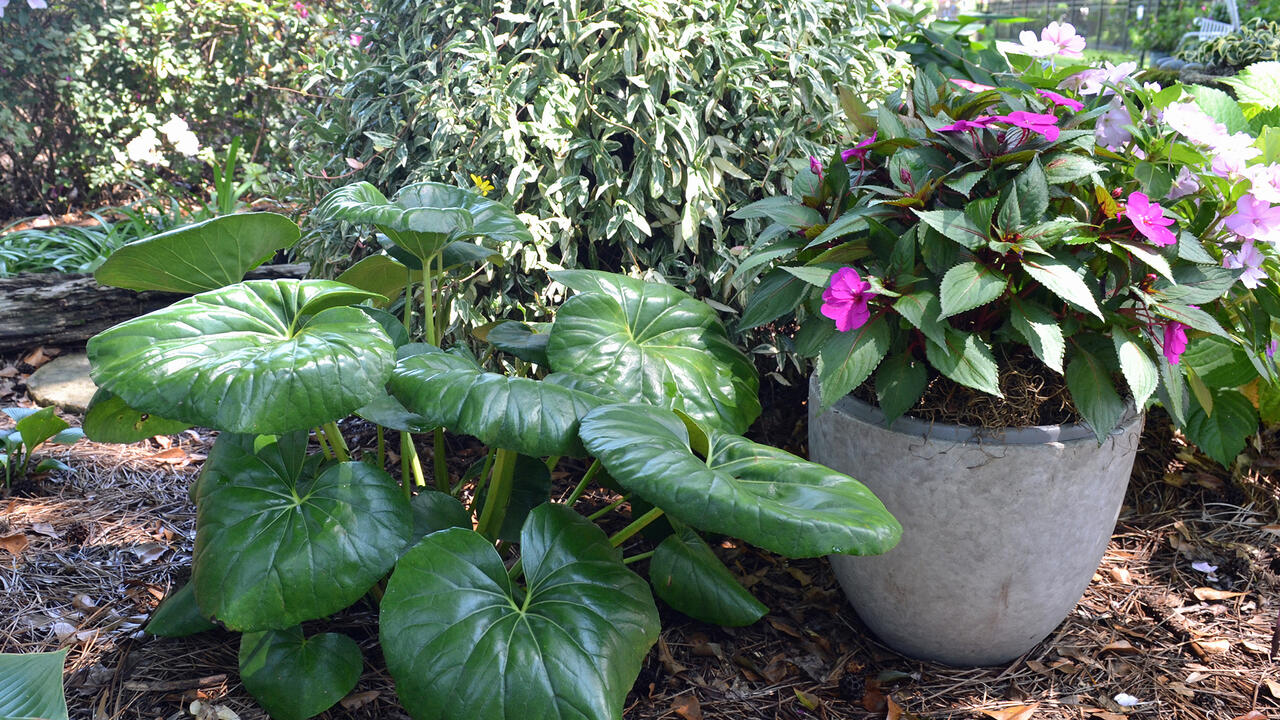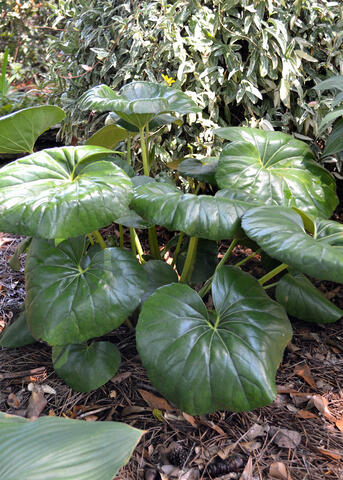There is an unusual looking plant with a descriptive name that performs well in shade gardens in the state.
The tractor seat plant has oversized, thick and leathery foliage shaped like the curved iron seats once found on old tractors. Known also as leopard plant, the Farfugium japonicum is native to the stream banks, moist woodlands and coastal regions of Japan and eastern Asia.
Although this plant looks like it belongs in a tropical rainforest rather than a Southern garden, it was completely at home in a shade garden I recently visited in Meridian, Mississippi. The tractor seat plant thrives in shady, sheltered locations where moisture is steady, much like the warm and humid conditions of its natural habitat.
The leaves are deep green with a reflective shine, and their bold, architectural form stands out beautifully against plants with colorful flowers and those with variegated foliage.
In late summer and fall, the tractor seat plant surprises gardeners with clusters of bright yellow, daisy-like flowers held above the foliage on tall stalks.
These cheerful blooms add a splash of sunshine to shady corners, arriving just when many other plants are fading for the season. The contrast of the golden blossoms against the large, glossy leaves is both unexpected and delightful.
This plant thrives in partial to full shade. Since it prefers moist, well-drained soil, make sure it gets regular water during dry spells. A thick layer of mulch helps keep the soil consistently cool and damp through our hot Mississippi summers.
Provide protection from the afternoon sun, which can scorch their glossy leaves.
I recommend using a balanced, slow-release fertilizer in spring to keep the foliage lush and healthy. Because the large leaves can sometimes be a target for slugs and snails, keep an eye out for damage and use slug control when needed.
When it comes to landscape design, tractor seat plants are versatile.
I like using them as bold specimens near shaded entryways, as visitors can appreciate their dramatic leaves up close. They also work beautifully in groupings of three or more, where their broad foliage creates a striking groundcover effect.
The contrast is eye-catching when these plants are paired with delicate textures like ferns, variegated leaves of jasmine or the soft blooms of impatiens.
Where I live in U.S. Department of Agriculture zone 8, tractor seat plants reliably overwinter outdoors, especially with a little mulch protection. In colder regions, gardeners can dig up and store the plant indoors for the winter or grow it in containers that can be moved for cold protection.
Container-grown tractor seat plants need the same care as those grown in the ground -- consistent moisture, rich soil and a shady spot away from the harshest sun.
With its glossy foliage, cheerful yellow flowers and dependable nature, the tractor seat plant has become one of my favorites and has a spot in my backyard. If you’re looking to add drama and beauty to your shade garden, the tractor seat plant is a must-try.
Images
Contacts
-
 Extension Agent IV*
Extension Agent IV*- MSU Extension- Pearl River County

